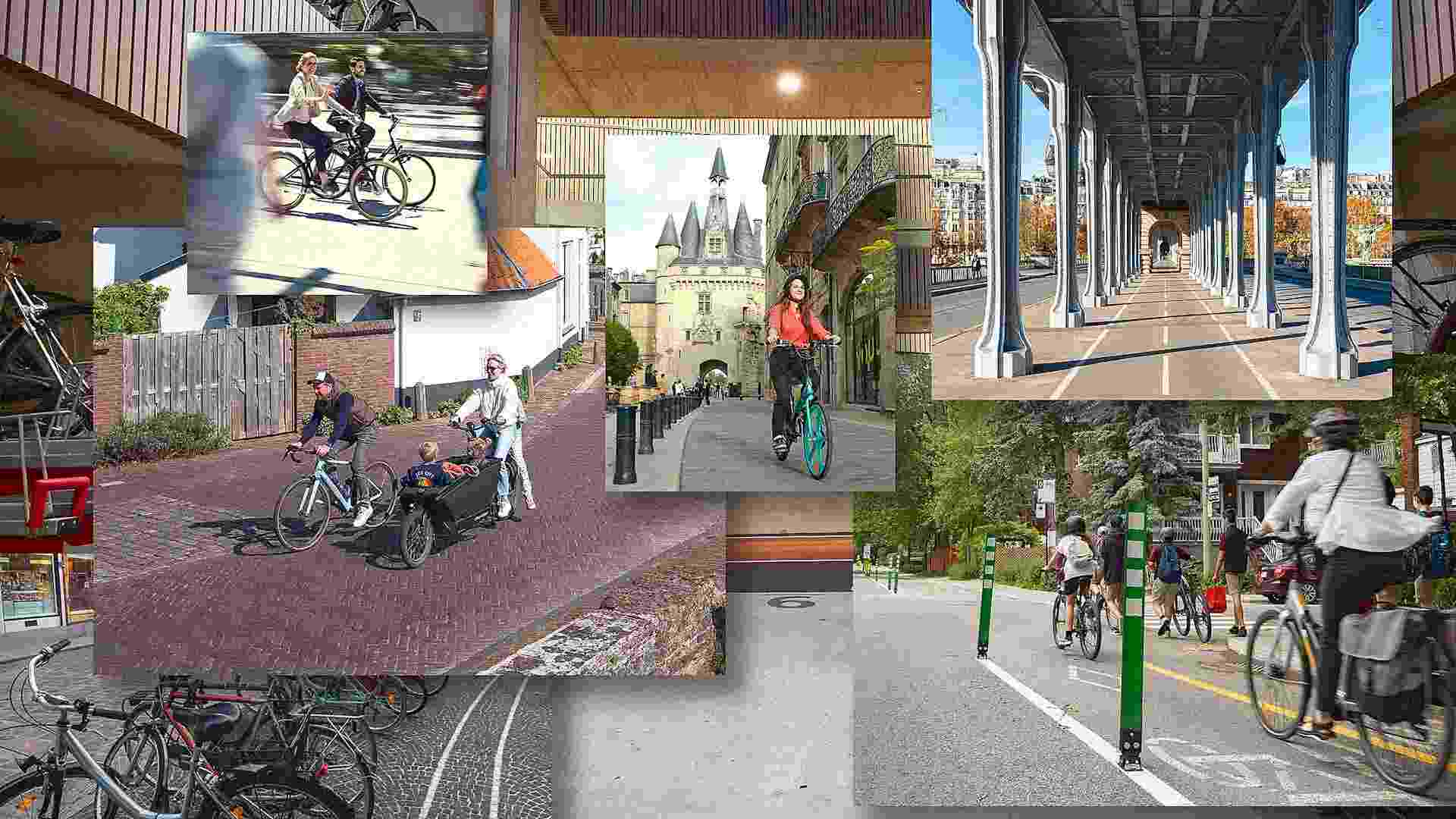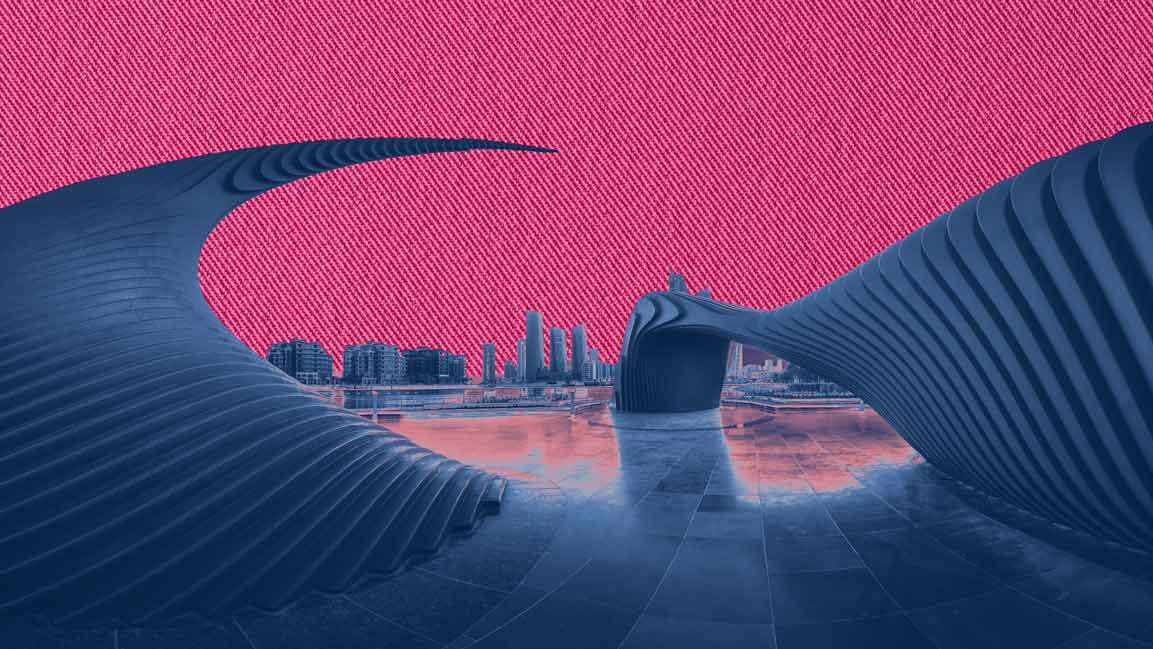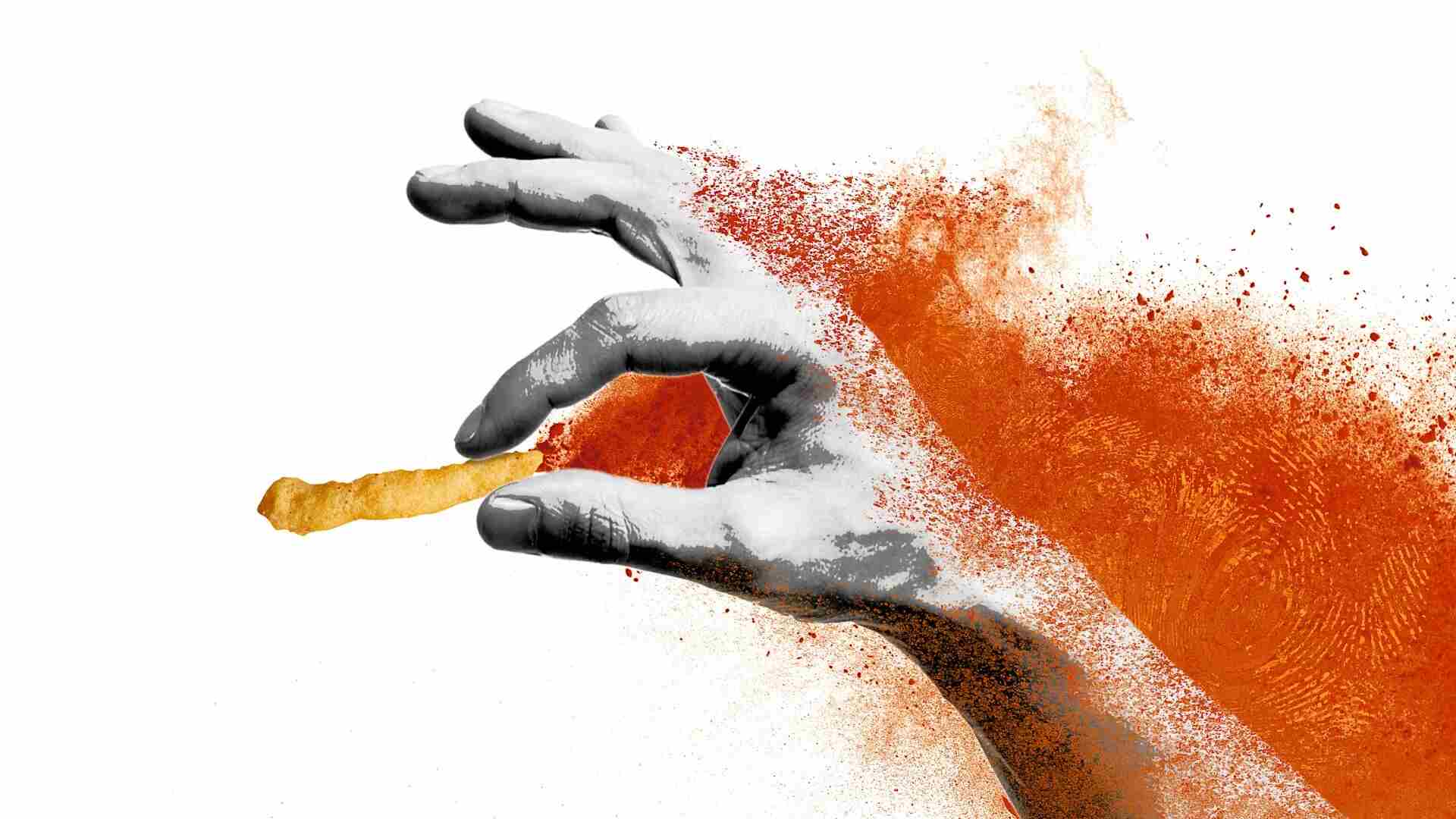- | 10:00 am
How Designlab Experience brings Saudi culture to life at Layali Diriyah
Designlab Experience showcases local cuisine, retail, and talent at Layali Diriyah in support of Saudi Arabia’s national tourism drive.
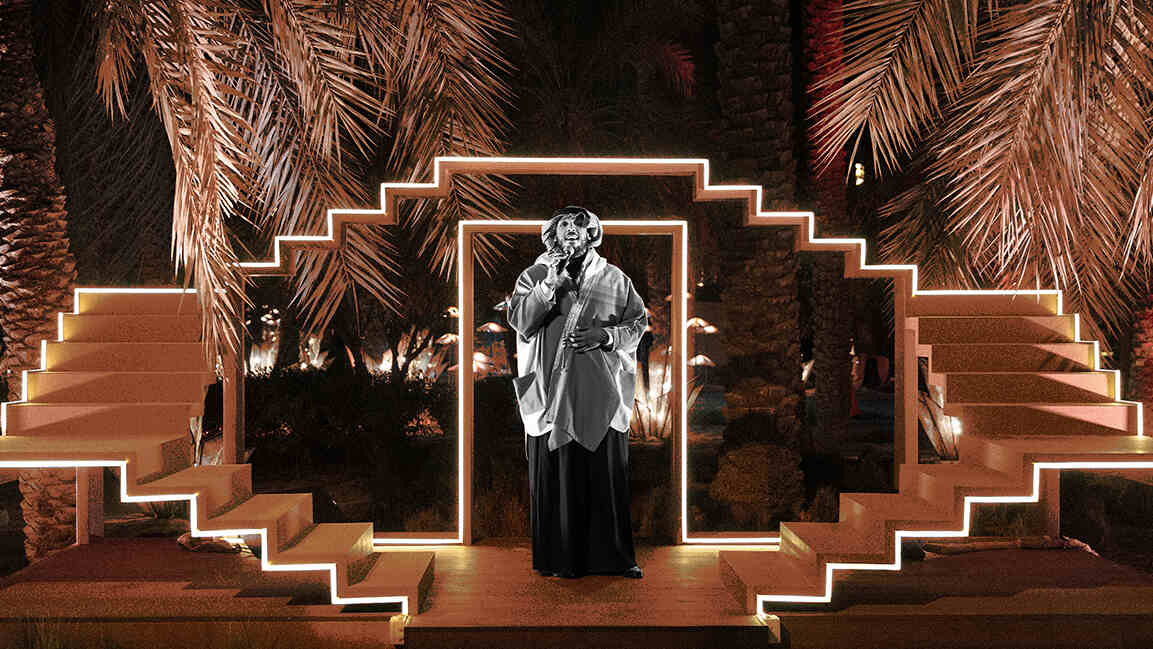
Saudi Arabia’s Vision 2030 aims to diversify its economy away from oil, and tourism plays a significant role in this strategy. The kingdom aims to reach 150 million visits by 2030, creating 1.6 million job opportunities. New tourism spots, increased annual events, and immersive experiences reflect its pursuit of meeting its goals.
Their most famous annual experience is the Riyadh Season, which is considered one of the world’s biggest winter festival seasons. Featuring extravagant entertainment, its fifth season surpassed 16 million visitors.
Its counterpart, Diriyah Season, focuses on cultural experiences. The season’s main attraction is the annual Layali Diriyah event, set against the historic backdrop of a palm tree farm near the UNESCO World Heritage site of At-Turaif.
Now in its third edition, the event runs until April and features three overarching themes, each represented in a distinct zone: Heritage and Craftsmanship, Education and Knowledge, and Nature.
Behind the annual immersive experience is architecture and creative studio Designlab Experience (DLE), which specializes in crafting immersive environments for urban spaces, large-scale installations, high-profile weddings, and interactive exhibits.
The event’s master plan encompasses an expansive 40,000 square meters, seamlessly integrating elements inspired by nature and visual notes derived from Najdi architecture and craftsmanship. The temporary destination offers a harmonious fusion of gastronomy, retail, art, and entertainment.
SUSTAINABILITY IN THE EVENT INDUSTRY
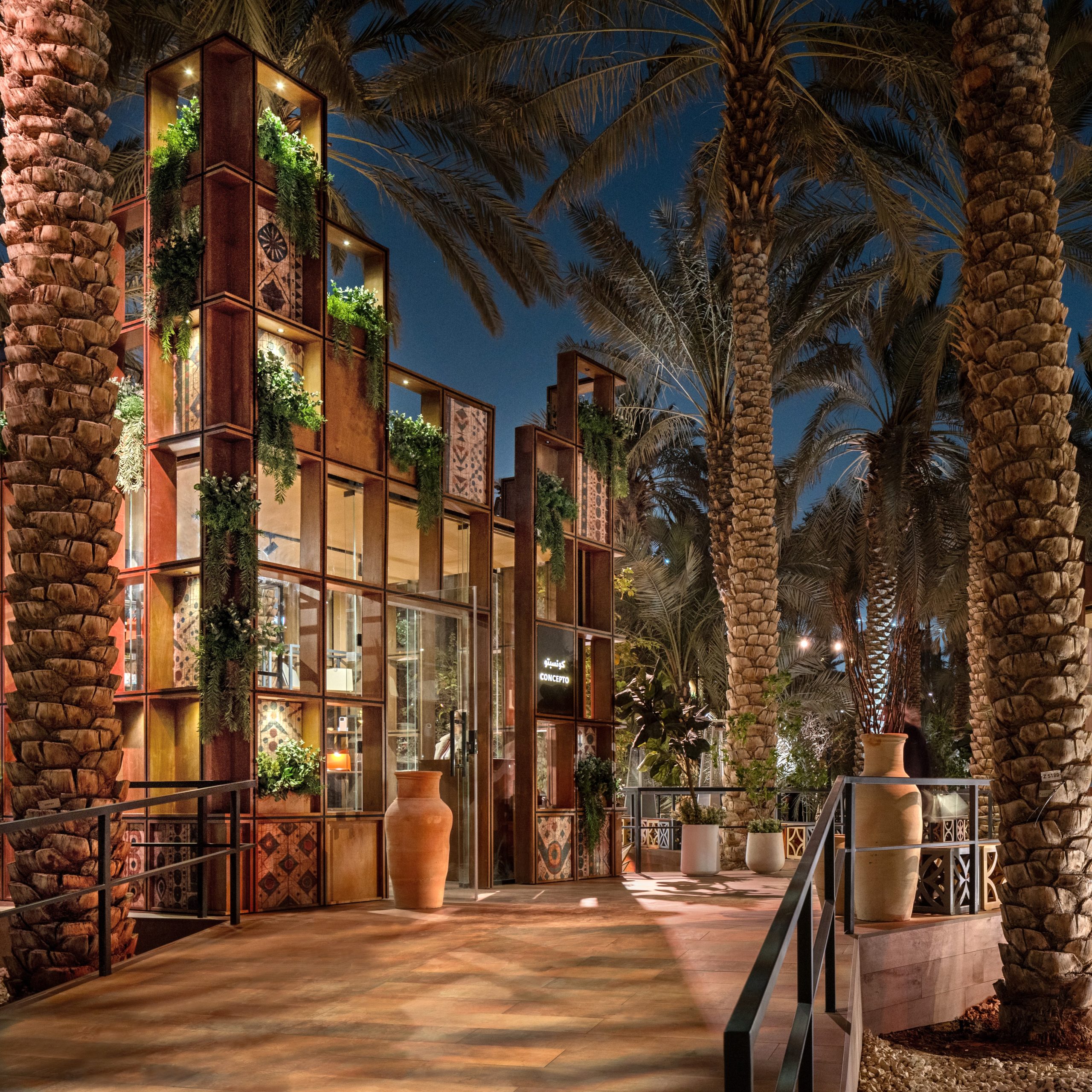
kiosks showcase Diriyah-inspired designs
Given the location for the annual event, sustainability and eco-friendly design are thoughtfully implemented and considered, ensuring minimal impact on the natural surroundings.
DLE’s Chief Operating Officer, Yvonne Hoffzimmer, says true sustainability remains a challenge in the event industry, where temporary structures are less sustainable than permanent ones.
However, DLE’s efforts are to make events as sustainable as possible.
“For all projects we design and produce in natural landscapes, our core philosophy is to leave no trace. It must be exactly as we found it when we leave the site. This is especially critical when working in sensitive environments like a palm tree farm— harming the ecosystem is not an option.”
She explains that permanent structures aren’t feasible in events like these, but there are still ways to minimize impact. “We address this by prioritizing material sourcing, using elements that can be repurposed, such as steel frames and platforms.”
Local production is a key focus. Previously, elements were produced in the UAE and transported to the kingdom, but with growing local capabilities, DLE now meets the same high standards locally, reducing transportation needs. The company also relies on local labor, reinvesting in the economy and minimizing logistical impact.
“Overall, while the event industry has inherent limitations, we aim to create a more sustainable and responsible cycle,” says Hoffzimmer.
CULTURAL EXPERIENCES
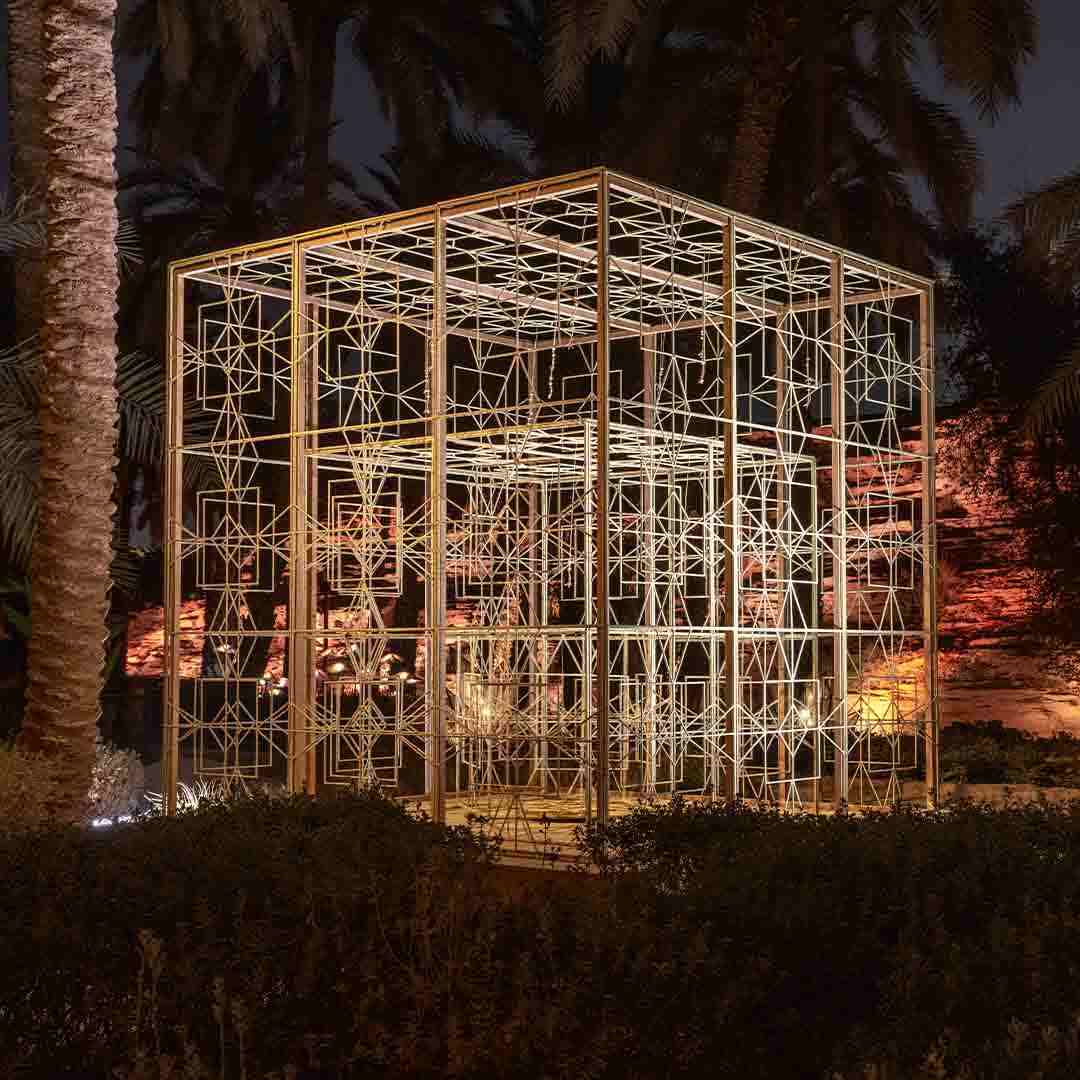
Three Golden Stages Art Installation by Dr. Saad Al Howede
Layali Diriyah draws from diverse Saudi cultural influences to create a fully immersive atmosphere. Visitors can enjoy culinary offerings across eight distinct restaurants, a retail village, five stages featuring mainly local talent, and a thoughtfully designed seating area.
At the heart of the dining experience is the Chef’s Table, a weekly event where renowned chefs host live cooking showcases. The intimate space is accentuated by neon light installations and Najdi-inspired design elements.
Other restaurants offer a distinct concept, each with private pods among trees and mudbrick-inspired architecture with an open fire grill to fabric canopies echoing traditional shading and a library-themed space honoring education.
Hoffzimmer says curating the culinary, retail, and entertainment experiences involved extensive research. “It’s the same process for all of them. It’s a blend of what’s trending and knowing the ins and outs of our chefs, artists, and retailers—understanding what people want right now.”
She adds that DLE evaluates the origins and authenticity of each vendor. “Sometimes we bring in a few international elements for flair, but in Layali, that’s really not the focus. It’s very regional, very Saudi.”
Hoffzimmer also highlights the importance of balancing pricing and accessibility, ensuring there’s something for everyone. “Specifically with cuisine, we aim for a variety—people will want Lebanese food, local Saudi dishes, and Asian fusion. We know this from experience; not everyone wants the same type of food. So, it’s about achieving that variety that appeals to a broad audience.”
Art is also a key feature throughout Layali Diriyah. A standout is the entrance installation—a monumental, serpentine sculpture crafted from woven baskets, referencing regional weaving techniques. Additional works include Lahauj by Khuloud AlBugami, inspired by Najdi architectural elements, and Three Golden Stages by Dr. Saad Al Howede, representing three pivotal milestones in the kingdom’s history.
The event’s retail village blends artisanal crafts with modern luxury. Set within wooden cubicles adorned with historic Diriyah patterns and calligraphy, the space also features carts decorated with motifs inspired by Diriyah’s doors, offering Saudi coffee, dates, and local specialties.
Hoffzimmer also points out that despite Saudi Arabia’s major focus on boosting international tourism, events like Layali Diriyah tend to attract and resonate more with local visitors, strengthening domestic tourism.
“That’s an important and lovely thing. It signals that it must be genuinely good and authentic if all the locals are coming. It also aligns perfectly with the kingdom’s tourism strategy, where domestic tourism is a huge priority—encouraging people within Saudi Arabia to explore the kingdom and visit significant places like Diriyah, the nation’s birthplace.”
She emphasizes that the event aims to showcase the essence of Saudi hospitality and open up destinations that were previously less accessible.
For DLE, accessibility is key, and Hoffzimmer highlights how this is reflected in Layali Diriyah’s layout. “It’s about creating a balance—yes, there are restaurants where you can have a more premium experience, but there are also casual spaces where you can enjoy a pleasant evening, wander around, absorb the atmosphere, and feel immersed.”
PLANNING FOR THE FUTURE
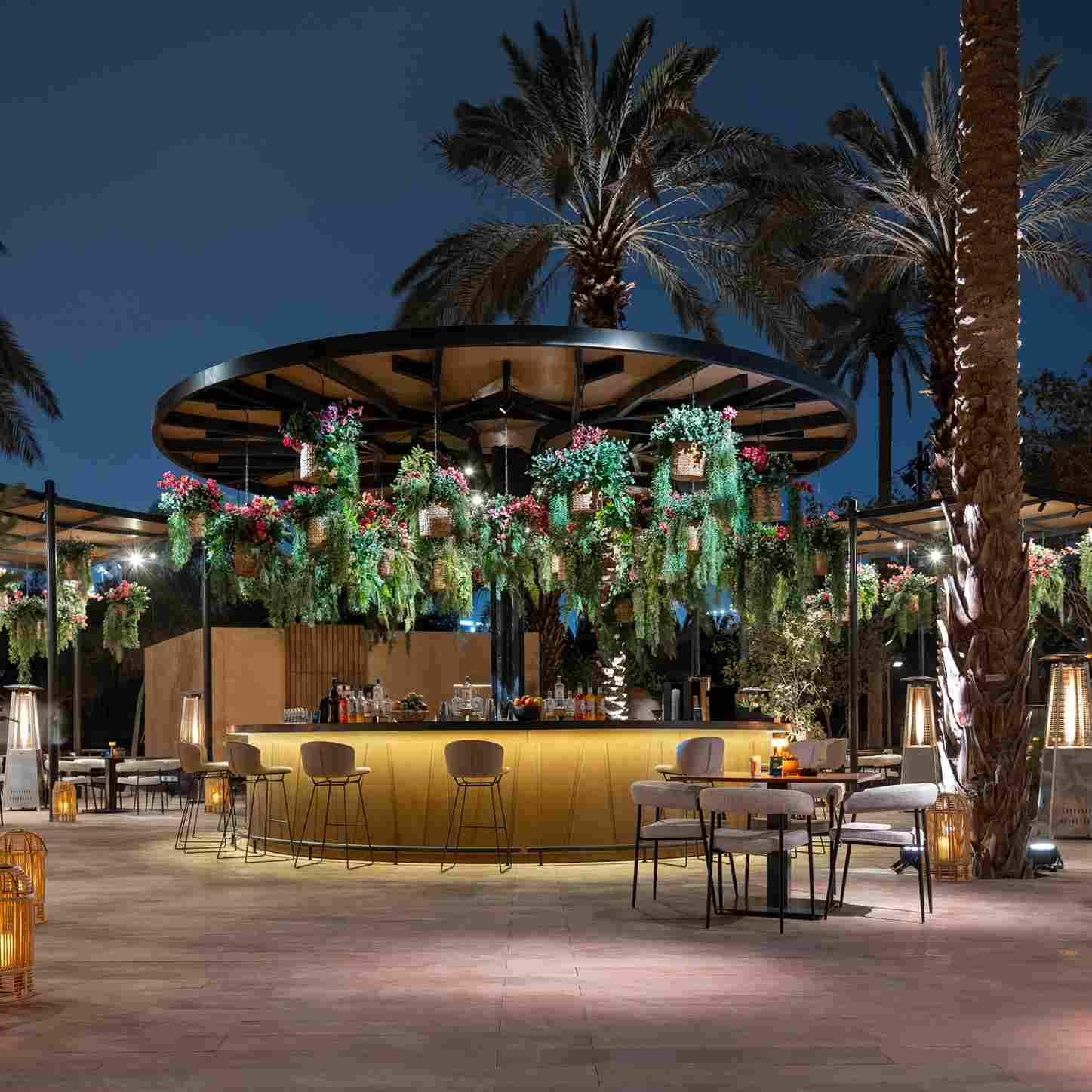
Open Space Restaurant at Layali Diriyah 2025
Hoffzimmer notes that these events are always done as collaborations. In this instance, Layali Diriyah cooperates with the Diriyah Company (DGCL), which has a clear set of objectives and goals for this destination. “We take those goals and let them inform our design process. All these elements together form destination-making—creating the most immersive and experiential journey possible that fully responds to all those objectives.”
DLE constantly focuses on the future, continuously innovating and refining its design spaces. For the team, Layali Diriyah remains an evolving project. Hoffzimmer explains that each edition serves as a learning opportunity, helping them assess what works, what doesn’t, and where improvements can be made for the next iteration.
This year, the team prioritized creating more open spaces after observing visitors prefer outdoor seating to enclosed areas. Looking ahead, Hoffzimmer anticipates an extended edition of Layali Diriyah next year.
“We expect to start earlier in the season and run longer, especially since Ramadan creates a natural one-month pause. It makes sense to begin sooner, pause for Ramadan, and then resume afterward, making the most of the beautiful weather.”
“For the artists, it could be about spotlighting more emerging talent,” she suggests, adding that art competitions might be introduced to give rising artists a chance to earn a place at Layali Diriyah rather than limiting participation to established names. This concept would be developed with DGCL.
She explains that the same approach applies to cuisine and retail, where supporting up-and-coming local chefs and retailers is key. This gives them the platform to shine at such a high-profile destination.
“It’s about building on what we’re already doing,” she adds. “We’ll gather more insights by the end of this edition. I’m confident there will be valuable lessons that shape how we move forward.”











